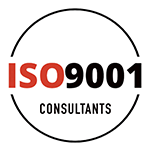Maintaining ISO 27001 compliance is essential for protecting our organisation’s sensitive information and demonstrating our commitment to best practices in information security. ISO 27001 provides a framework for establishing, implementing, maintaining, and continually improving an Information Security Management System (ISMS). However, achieving certification is just the beginning. Ensuring ongoing compliance requires continuous effort, attention, and improvement.
To keep our ISMS effective, we need to implement best practices that align with ISO 27001 requirements. These practices help us identify potential security threats, manage risks proactively, and ensure our team is well-equipped to handle information security challenges. Regular internal audits, continuous training, effective risk management, and leveraging technology are some of the key strategies to maintain compliance. Each of these practices plays a vital role in ensuring our information security measures remain robust and up-to-date.
By adopting these best practices, we can create a sustainable approach to maintaining ISO 27001 compliance, ensuring our organisation stays secure and prepared for any future audits or security challenges. This proactive stance not only safeguards our data but also reinforces the trust of our clients and stakeholders, positioning us as a reliable and secure partner in our industry.
Regular Internal Audits and Reviews
Conducting regular internal audits and reviews is a cornerstone of maintaining ISO 27001 compliance. These audits help us identify any weaknesses in our Information Security Management System (ISMS) and ensure that our processes align with the ISO 27001 standards. Internal audits are like health checks for our ISMS, allowing us to spot issues before they become major problems.
During an internal audit, we examine our policies, procedures, and controls to make sure they’re working effectively. This involves reviewing documentation, interviewing staff, and testing security measures. After the audit, we compile a report detailing any findings and recommendations for improvement. Regular internal reviews help us stay ahead of potential threats and make informed decisions about our information security practices. They ensure our ISMS remains robust and can adapt to new challenges.
Continuous Employee Training and Awareness
Keeping our employees informed and aware of information security best practices is crucial for maintaining ISO 27001 compliance. Continuous training ensures that everyone in our organisation understands their role in protecting sensitive information and can identify potential security threats.
Training sessions should cover a range of topics, from basic security principles to specific policies relevant to their roles. We can use workshops, online courses, and regular briefings to keep the information fresh and engaging. Awareness programs, such as posters and reminders, help reinforce key messages and keep security at the forefront of everyone’s mind. By investing in continuous training, we create a culture of security where all employees are vigilant and proactive in safeguarding our information. This collective effort is fundamental to maintaining ISO 27001 compliance and protecting our organisation from security breaches.
Effective Risk Management Procedures
Managing risks effectively is crucial for maintaining ISO 27001 compliance. Proper risk management procedures help us identify, assess, and mitigate potential security threats before they can impact our operations. This proactive approach ensures that we remain resilient against a wide range of security risks.
To manage risks effectively, we need to start by conducting thorough risk assessments. This involves identifying all potential risks to our information assets and evaluating their likelihood and impact. Based on this assessment, we can prioritise risks and implement appropriate controls to mitigate them. Regularly updating our risk assessments helps us stay aware of new threats and adjust our strategies accordingly. Documenting our risk management procedures and decisions is also essential, as it provides evidence of our compliance and helps us maintain a clear understanding of our security posture.
Utilising Technology to Support Compliance
Leveraging technology is a powerful way to maintain ISO 27001 compliance. Various tools and software can help us monitor our ISMS, automate repetitive tasks, and enhance our security measures. By integrating technology into our compliance efforts, we can improve efficiency and ensure consistency in our processes.
There are several types of technology that can support our compliance efforts. For instance, security information and event management (SIEM) systems can help us monitor network activity and detect potential security incidents in real-time. Automated compliance management tools can track our progress towards meeting ISO 27001 requirements and alert us to any gaps or non-conformities. Additionally, data encryption and access control technologies can safeguard our sensitive information and ensure it is only accessible to authorised personnel. By utilising these technologies, we can strengthen our ISMS and maintain continuous compliance with ISO 27001 standards.
Conclusion
Maintaining ISO 27001 compliance requires a dedicated and ongoing effort across various aspects of our organisation. From conducting regular internal audits and providing continuous employee training to implementing effective risk management procedures and leveraging technology, each practice plays a critical role in keeping our information security management system robust and effective.
Adopting these best practices not only helps us stay compliant with ISO 27001 standards but also ensures that we are well-prepared to face evolving security threats. This commitment to security fosters trust with our clients and stakeholders, demonstrating our dedication to protecting sensitive information. If you’re ready to take your organisation’s information security to the next level and ensure continuous ISO 27001 compliance, reach out to ISO 9001 Consultants. Let us guide you in implementing these best practices and achieving a secure future.








Users Comments
Get a
Quote